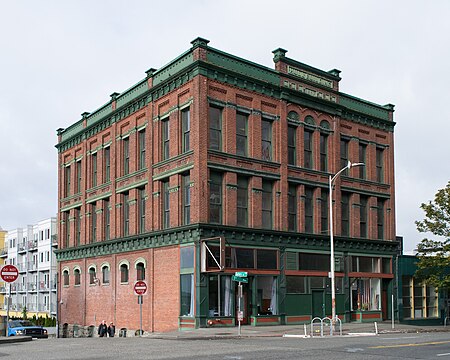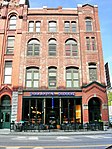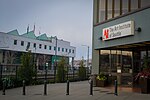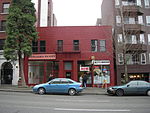Hull Building
1880s architecture in the United States1889 establishments in Washington (state)Belltown, SeattleCommercial buildings completed in 1889Commercial buildings on the National Register of Historic Places in Washington (state) ... and 1 more
National Register of Historic Places in Seattle

The Hull Building (also known as the A-1 Laundry Building) is a historic commercial building located at 2401-2405 1st Avenue in the Belltown neighborhood of Seattle, Washington. Designed by notable Northwest architect Elmer Fisher, It was constructed in the latter half of 1889 as an investment property by Seattle politician Alonzo Hull (1843-1929), and was added to the National Register of Historic Places on January 27, 1983. It is adjacent to the Battery Street Tunnel's south portal.
Excerpt from the Wikipedia article Hull Building (License: CC BY-SA 3.0, Authors, Images).Hull Building
Battery Street, Seattle Belltown
Geographical coordinates (GPS) Address External links Nearby Places Show on map
Geographical coordinates (GPS)
| Latitude | Longitude |
|---|---|
| N 47.614166666667 ° | E -122.34833333333 ° |
Address
Hull Building
Battery Street
98121 Seattle, Belltown
Washington, United States
Open on Google Maps









